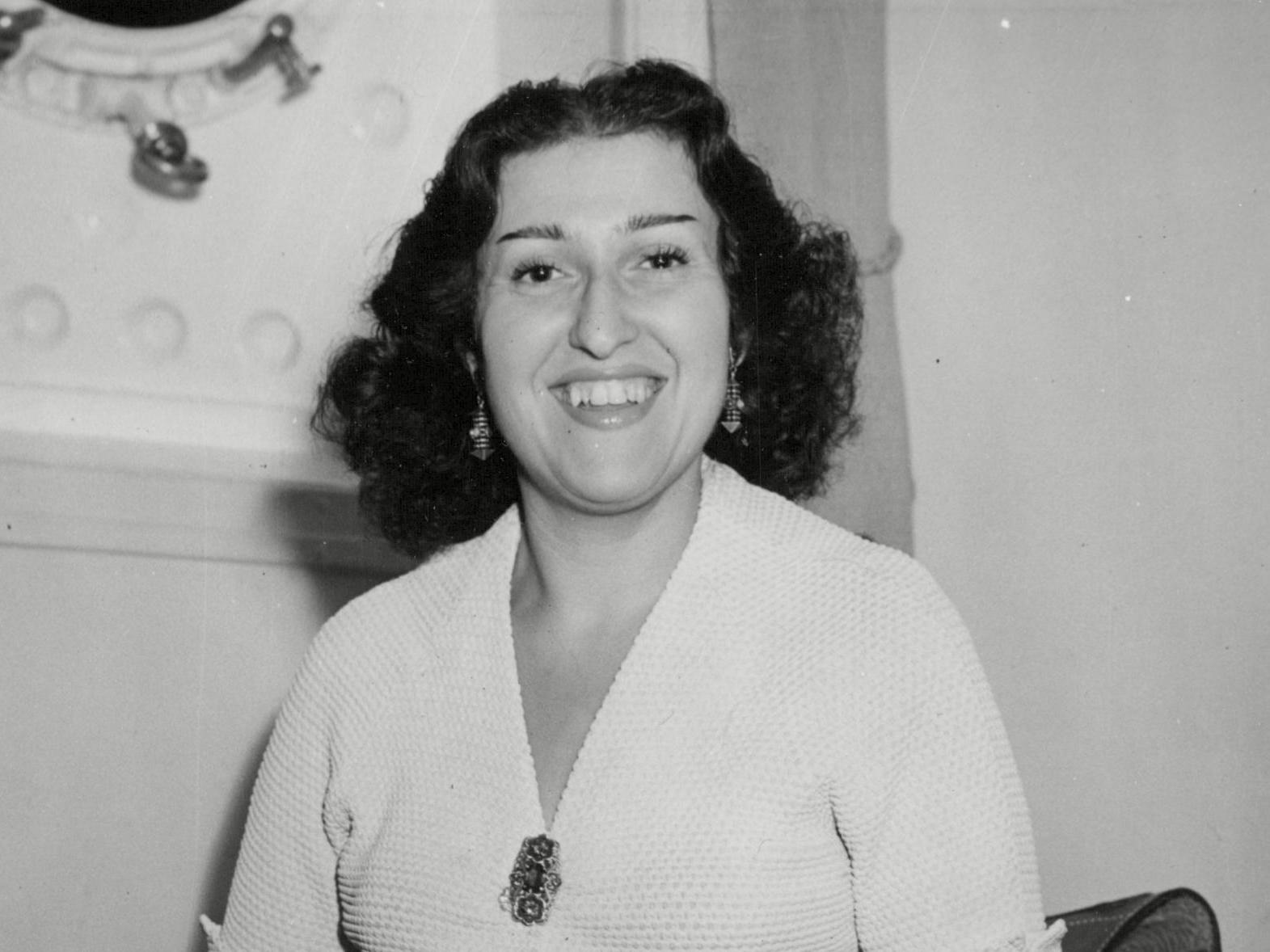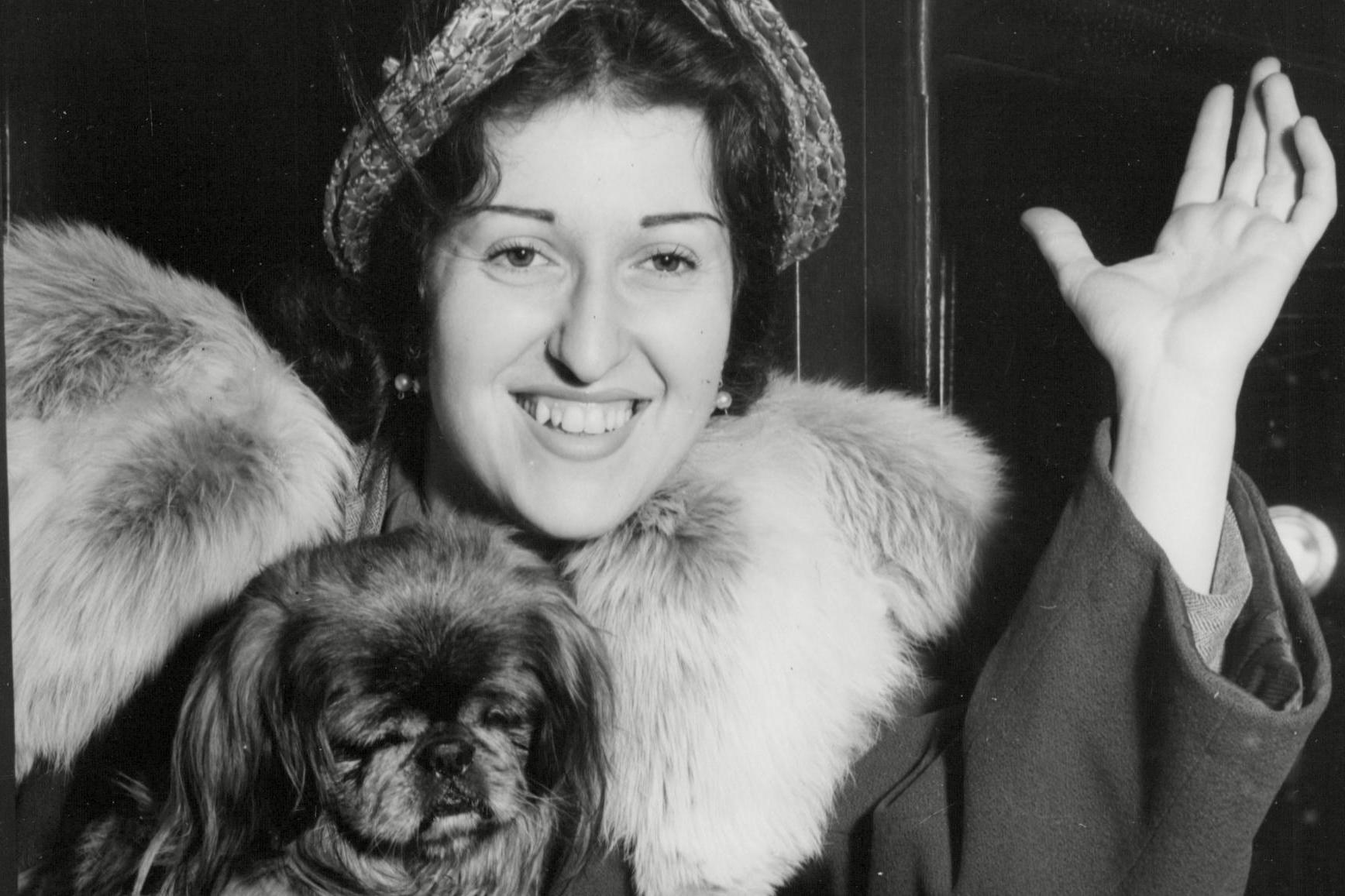Ida Haendel: Polish-born musician known as ‘grande dame of the violin’
She epitomised ‘a gracious yet wild style of playing’, popular in the early 20th century but now ‘extremely rare’

Ida Haendel was a Polish-born violin prodigy who became a sought-after soloist after moving to Britain, where she drew acclaim for her interpretations of concertos by Jean Sibelius and William Walton.
She died on 1 July at an assisted-living centre in Pembroke Park, Florida. She was 96. Her nephew Richard Grunberg said she had been hospitalised in March with respiratory problems, though he did not believe she had tested positive for coronavirus. She was later treated for kidney cancer.
In Haendel’s telling, she was just 3 when she began performing, picking up her older sister’s violin and amazing her mother by reproducing a song that she had just heard. She went on to perform professionally for some eight decades, playing morale-boosting concerts in London during the Second World War before touring the world and acquiring a reputation as “the grande dame of the violin”.
“When she plays the Beethoven concerto, you can imagine Beethoven wanted it that way,” Zubin Mehta, the former conductor of the New York and Los Angeles philharmonics, told the Associated Press in 2010. “She has been a violinist for violinists.”
Haendel epitomised what Washington Post arts critic Philip Kennicott once called “a gracious yet wild style of playing”, popular in the early 20th century but now “extremely rare”. Trained by Romanian musician George Enescu and Hungarian violinist Carl Flesch, she stood completely still during recitals while dazzling audiences with works by Beethoven, Brahms, Walton and Sibelius, whose Violin Concerto became a signature piece.
After performing the concerto in Helsinki in 1949, she received a letter from the composer. “You played it masterfully in every respect,” Sibelius wrote, adding: “I congratulate myself that my concerto has found an interpreter of your rare standard.” Another admirer of her interpretation, Telegraph music critic Geoffrey Norris, wrote that she played the Sibelius concerto with “ice and fire,” resulting in a 2009 recording for Testament Records that was “simply mind-blowing”.
Critics sometimes noted that Haendel’s exuberant performance style was matched by the flamboyant outfits she wore to recitals, including an electric-magenta sheath dress, turquoise pantaloons and snakeskin vest that complemented her snakeskin purse and five-inch snakeskin heels. “As long as you are onstage, you still have to present a nice view,” she once told the South Florida Sun-Sentinel.
Haendel was a rare female fiddler when she started out, and for much of her career remained one of the few women playing marquee concert halls. She performed at Prince Charles’s 40th birthday celebration, premiered a violin concerto by Allan Pettersson, was among the first soloists to play with the Israel Philharmonic Orchestra in Tel Aviv and maintained a long association with the Proms, an annual summer concert series that has become one of London’s most beloved musical institutions.
After making her Proms debut in 1937, she appeared another 67 times at the festival, notably playing Brahms’s Violin Concerto in 1938 under conductor Henry Wood.
“I was using pure instinct, and that is exactly what you need to play his works,” she later told British music magazine the Strad. “It’s something you are born with. If you don’t feel it in your soul, on an emotional and intellectual level, then it can’t be taught. You can’t tell anyone how to do it if they don’t have the right capacity and instinct.”

Haendel credited her natural talent to reincarnation, saying that she must have played the violin in an earlier life. But her upbringing in a musical household surely helped as well: her portrait-painter father played the cello and violin, while her sister played the piano and her mother sang.
The family was living in Chelm, a city in eastern Poland, when Ida was born on 15 December. According to Haendel’s older sister – and a birth certificate that her father presented to satisfy an age requirement for an early performance in London – she was born in 1923. Haendel later displayed a certificate giving 1928 as her birth year.
“She once showed me three different birth certificates,” her friend Norman Lebrecht, creator of the classical music blog Slipped Disc, wrote in a 1 July obituary. “They were not very accurate in Poland, she said.”
Haendel was born with the last name Hendel but later embellished the spelling as a tribute to the composer George Frideric Handel (sometimes spelled Haendel), whom she claimed was a relative. The family was Jewish, and because of Haendel’s musical training, they moved to England on the eve of the Second World War, escaping the Holocaust.
She later travelled to the Auschwitz concentration camp complex to perform Handel’s Dettingen Te Deum for Pope Benedict XVI, during his 2006 tour through Poland. “Imagine a Jewish woman playing where it all happened,” she told the AP, “playing in front of the Holy Father.”
After playing London concerts organised by pianist Myra Hess during the war, Haendel made her American debut at New York’s Carnegie Hall in 1946. She moved to Canada six years later and, beginning in the late 1970s, split her time between Montreal and Miami, where her father moved to be near his friend Isaac Bashevis Singer, the Nobel prize-winning novelist.
Haendel performed with leading conductors including Mehta, Sergiu Celibidache (her preference for Brahms) and Otto Klemperer (her preference for Beethoven), once explaining, “You cannot play with inspiration when the conductor is an imbecile.”
She recorded for labels including Decca, which she used as the name for several of her dogs, and also led master classes and private lessons, including for German violinist David Garrett. She never married – “it was all about the music,” her nephew said – and has no immediate surviving family.
Haendel was named a commander in the Order of the British Empire in 1991 and continued performing until just a few years ago. She said that she was still honing her interpretations of the concertos she had played for decades, trying to reach “that sublime quality” intended by Beethoven, Brahms or whoever else was on the programme.
“I am not there to please the audience,” she told Lebrecht in 2000. “I am not an entertainer. I am there to serve the composer.”
Ida Haendel (Hendel), violinist, born 15 December 1923; died 1 July 2020
© The Washington Post
Join our commenting forum
Join thought-provoking conversations, follow other Independent readers and see their replies
Comments
Bookmark popover
Removed from bookmarks